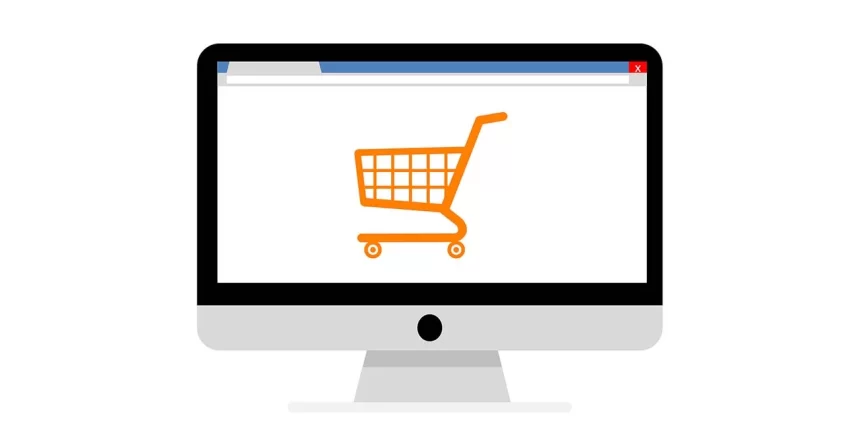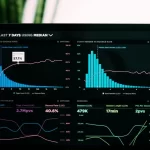The online retail market is becoming increasingly difficult to play. Margins are getting smaller, as the massive influx of newcomers is further saturating a market with existing rivals already packed to the brim. In an era where data has developed into a hyper-value asset, the so-called “new oil,” companies are turning to Big Data to continue moving forwards. Many businesses are increasingly finding value in the data, by analyzing it in myriad new ways, by visualizing it according to patterns and trends, and by drilling down at the granular level to discover hidden possibilities.
Big Data has had a positive impact, identified in many industries, including retail. With Big Data, retailers are producing more revenue, improving forecasting, optimizing processes in the supply chain, and intensify inventory management. Additionally, Big Data helps streamline even the most complex operations, thus significantly reducing operating costs.
Here are the top five ways Big Data can support retailers online.
Business Forecast
Retail is a hypercompetitive market. While there are millions of customers flocking daily to retail outlets, both traditional brick-and-mortar shops, and online stores, retailers are continually in need of standing out from the rest of the market. Big Data provides retailers with the leverage they need to rise above the rest. Big data helps businesses to accurately predict industry dynamics, customer preferences, and shopping habits. This allows them to make data-driven decisions, execute more successful marketing campaigns, and deliver specific unique targeted messages as well as personalized content in an attempt to attract and engage new and existing customers.
Big Data enables marketers with an understanding of what their customers want, based on their history of purchasing, past contacts, and experiences, products viewed, and more. Also, non-common business variables such as weather, season, and birthdays come into play when it comes to forecasting the overall market, and particularly the consumer. Moreover, it also revealed that using Big Data can cross multiple lines, especially customer privacy. Retailers have to find a delicate balance where they can use Big Data while safeguarding the confidentiality of the information and privacy of their customers.
Recognize, Attract and Maintain Customers with Major CLTV
Every business organization wants to attract more people and bring more clients to its platform. But advertising and marketing strategies aimed at attracting and retaining new customers can be costly if they fail to attract buyers that provide immense Customer Lifetime Value (CLTV). The Cost of Customer Acquisition (CAC) – which includes advertisement, sales, marketing, promotions, and other attempts to introduce, connect and turn people into paying customers – will be significantly lower than the CLTV. To put it plainly, you want the more generous spenders to be the majority of your customer base, without investing too much on the recruitment and retention process.
For most retailers, the challenge is to find, acquire, and maintain these critical customers. There are several pain points in assessing a lifetime value for the consumer. But with Big Data, retailers can solve many of these issues and eventually identify and attract customers who add tremendous value to their business. By integrating their own data with other sources of information, retailers may use big data to determine whether or not a customer would be profitable and for how long. Also, they can guess how much to spend on CAC. Netflix and Starbucks are some of the major brands which use Big Data to estimate CLTV and use the insights to add more clients.
Once customers with a probable large CLTV are known, Big Data can be used to draw actionable insights and dig a little deeper into the trends, behavior, motivation, etc. of their customers. Retailers can then use the comprehensions to develop and implement highly targeted and customized messages, advertising, promotions, and other sales and marketing strategies to generate more revenues, improve profitability and stay a few steps ahead of the competition.
Enhance Supply Chain Performance
According to 64 percent of supply chain managers surveyed by SCM World, Big Data is considered an essential technology in supply chain management. This paves the way for long-term improvements in supply chain processes and practices across industries and organizations. Big Data provides the platform and tools for supply chain organizations to construct efficient models from vast amounts of unstructured and structured data from different sources. It gives them a better and broader view of their activities from a supply chain management perspective and helps them to dig deeper and gain insight into different aspects of their supply chain activities.
Supply chain companies will have greater visibility with big data, allowing them to identify and resolve problems that hinder the supply chain flow, such as bottlenecks, underperforming/broken products, unresponsive customers and partners, and more. With the ability to identify and resolve intermittent issues long before they become full-blown issues, consumers who exploit big data can keep the supply chain going or even boost the efficiencies of multiple dimensions that have been considered impossible in the past.
Perform Sentiment Analysis
It’s imperative what people are thinking about your company, products, and services. Authentic customer feedback will do wonders for the sales. On the other hand, if left unchecked, negative comments will wreak havoc on the credibility of the company and adversely impact sales. Sentiment Analysis is becoming more effective by integrating Big Data with AI, Machine Learning, and Natural Language Processing. Hence, the standard of knowledge is dramatically growing and becoming more actionable. Prevailing emotions and sentiments are accurately identified.
Feelings and feelings are now crucial to improving customer service and increasing customer loyalty and trust. Businesses need to recognize these feelings quickly and obtain knowledge from them if they want to have great value.
Identify Fraud
Although technology is progressing at a rapid pace that has positively influenced various industries, it has also provided the platforms and tools for fraudsters and cybercriminals to grow their attacks, avoid detection, and succeed in their fraud committing plans. Current mechanisms to prevent fraud are failing. The good news is that Big Data combined with state-of-the-art analytics technologies and fraud detection techniques can help detect and eliminate fraudulent activity before, during, and right after it happens.
By collecting and analyzing data from multiple, diverse sources, anti-fraud frameworks will easily identify situations, trends, and patterns that contribute to fraudulent acts or are closely associated with them. It simplifies and streamlines the development and implementation of anti-fraud models based on the recent data. Each organization has specific requirements, processes, and systems regarding security. By using big data, they can create personalized solutions for fraud detection and prevention, which are precisely tailored to their needs.
Conclusion
Big data utilization isn’t always simple – particularly for businesses that remain embedded in old-school frameworks and are mostly dependent on antique legacy systems to operate their operations. Big data is an emerging, dynamic field. It will take time to get to grips with this and exploit it absolutely.
However, companies that struggle to integrate Big Data into their key growth plans are likely to be left behind. It is well worth finding the right apps and the right partners. Big Data can be a massive boost to virtually every aspect of the online retailing environment.










